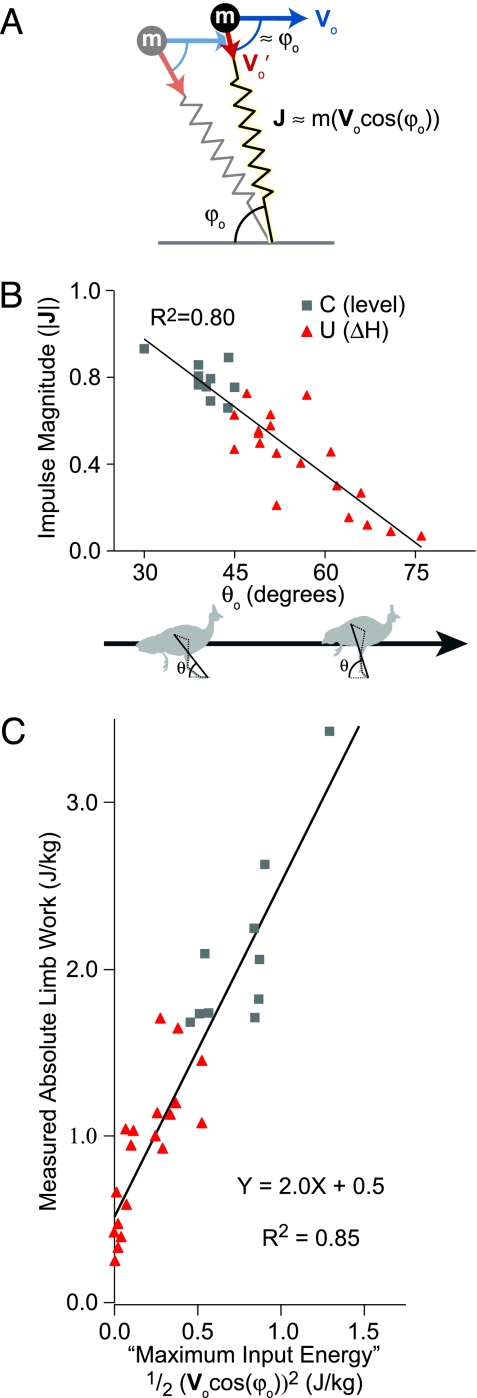Fig. 3.
Limb loading and work following the perturbation are consistent with the mass–spring model. (A) Shown is the relationship between leg spring contact angle (ϕo), velocity at contact (Vo), and total ground impulse (J) in a mass–spring system (Eq. 3). If the virtual leg at contact is perpendicular Vo, J is zero. (B) Measured ground impulse magnitude (|J|) (see Methods) decreases with increasing limb contact angle θo. (C) An estimate of mass-specific leg spring energy based on the model (see Methods) predicts most of the variation in absolute limb work during stance (R2 = 0.85; P < 0.0001).

